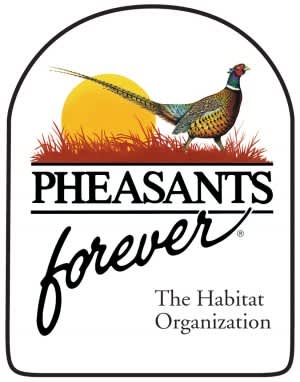Pheasants Forever to Testify Before U.S. House Subcommittee
Pheasants Forever 04.26.12

Pheasants Forever (PF) Vice President of Governmental Affairs Dave Nomsen will testify before a House Agriculture Subcommittee today, representing the views of Pheasants Forever, Quail Forever and the organizations’ 135,000 combined members, on the Conservation Reserve Program and will offer recommendations on 2012 Farm Bill conservation provisions. Pheasants Forever wants the federal Farm Bill to continue protecting sustainable agricultural production, while giving landowners and producers the appropriate tools to make responsible conservation decisions. Those tools include continuing the successful CRP along with a suite of other conservation programs and augmenting them with sound land management policies.
Nomsen’s testimony will specifically address the economic capabilities and needed improvements of the Conservation Reserve Program (CRP) in its current status, essential CRP programs for conservation’s future, conservation accountability, public hunting land access and the progressive effect hunting has on the rural and national economy.
“The Conservation Reserve Program has served as the single most important piece of conservation legislation in U.S. history. If we are to secure the benefits of this program, we need to ensure the 2012 Federal Farm Bill has the necessary provisions to stay economically viable moving forward,” says Dave Nomsen.
Pheasants Forever’s Top Five 2012 Farm Bill endorsements include:
- Reauthorize CRP. With approximately 6 million acres set to expire in 2012 and an additional 3 million acres in 2013, the Conservation Reserve Program is expiring acres at an alarming rate. Congress has to act to pass a 2012 Farm Bill and reauthorize CRP so the program can rebuild going forward.
- A Competitive Conservation Reserve Program – Pheasants Forever understands and supports the need for an economically competitive and targeted Conservation Reserve Program and the reauthorization USDA’s most successful conservation programs in order to ensure the future of CRP and improve the program’s overall value. Conservation programs such as CP33 Buffer Acres, CP37 Duck Nesting Acres, and CP38 SAFE Acres offer the ability to turn every CRP acre into a specifically targeted approach to wildlife conservation and environmental sensitivity, while typically offering producers more competitive rental rates than general CRP contracts.
- Wetlands Reserve Program (WRP) Acres Baseline and Permanent Funding – WRP acts as American’s number one wetlands restoration program, improving wetland conservation, mitigating wetlands loss, providing migratory bird and fisheries habitat and improving water quality. “Wetlands are some of the most valuable pieces of land for wildlife and environmental quality,” says Nomsen, “In addition to permanently funded wetlands protections, an acres baseline for this program needs to be established, thereby ensuring a constant minimum of what we can improve upon.”
- Continuation of Open Fields Hunting Access Programs. The Voluntary Public Access and Habitat Incentive Program is an innovative program used to help fund dwindling public access to private lands, which constitutes the greatest threat to hunting in the United States today. Pheasants Forever supports the permanent authorization and funding for this program, which benefits both wildlife habitat and hunting access. “It is crucial to give sportspeople a place to experience the outdoors, and this voluntary program creates a win-win relationship for the landowner and the outdoorsman,” says Nomsen.
- Strengthened “Sodsaver” or Non-cropland Conversion Provisions – Sodsaver provisions would help conserve one of America’s most iconic and threatened ecosystems: our native grasslands. Grasslands provide essential habitat and breeding grounds for countless species of North American ducks and other recreationally important species like pheasants and deer. These provisions would save taxpayer dollars and conserve critical habitat while maintaining farmers’ abilities to manage their lands as they see fit.
“CRP is the workhorse of American conservation policy, and it would be both shortsighted and irresponsible to let this program fail simply for temporary gains, which is exactly what will happen if we do not collectively move towards a strengthened conservation measure in the 2012 Farm Bill,” notes Nomsen, “Now is not the time to dispute what we already know to be obvious, now is the time to act and ensure our nation’s conservation future.”
For more information about today’s House Agriculture Subcommittee hearing, please contact Dave Nomsen at (320) 491-9163 / Email Dave. For all other inquiries, please contact Rehan Nana, Pheasants Forever Public Relations Specialist, at (651) 209-4973 / Email Rehan.
Pheasants Forever and Quail Forever are the nation’s largest nonprofit organizations dedicated to upland habitat conservation. Combined, Pheasants Forever and Quail Forever have more than 135,000 members and 700 local chapters across the United States and Canada. Chapters are empowered to determine how 100 percent of their locally raised conservation funds are spent, the only national conservation organization that operates through this truly grassroots structure.

